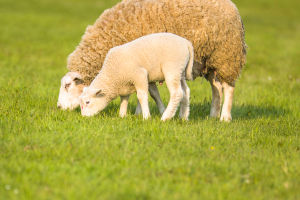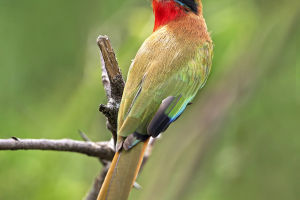The hummingbird family, a subset of the order Apodiformes, comprises 340 species.
These birds are characterized by their diminutive size, vibrant plumage, and rapid wingbeats that create a jewel-like blur during flight.
Hummingbirds earn their name from the humming sound produced by their wing vibrations, with wingbeat frequencies reaching up to 50 times per second. They are characterized by elongated and slender bills, variable-shaped narrow wings, and small feet.
Have you ever marveled at the aerial prowess of hummingbirds? They can hover in mid-air, move vertically like helicopters, and even fly backward. Clocking in at speeds of up to 34 miles per hour (54 kilometers per hour) and with wingbeat frequencies reaching up to 80 times per second, their flight capabilities are astounding and have left scientists intrigued. But how do hummingbirds manage to hover in mid-air?
1. Wing Structure:
Understanding the flight mechanics of hummingbirds begins with examining their wing structure.
Hummingbirds possess highly flexible wings capable of rotating in three dimensions: fore and aft, up and down, and left and right. This flexibility allows them to control the angle and direction of their wings, generating varying airflow and lift. Lift refers to the upward force exerted by air on an object, determining whether it can achieve flight.
During forward flight, hummingbirds angle their wings backward, creating a sharp angle with the horizontal plane. This configuration forms a low-pressure area above the wing and a high-pressure area below it, resulting in an upward lift force due to the pressure differential. This lift-generation mechanism is fundamental to the flight of most bird species.
To hover in mid-air, hummingbirds adjust their wing angle by tilting them forward, creating a blunt angle with the horizontal plane. This setup forms a low-pressure area below the wing and a high-pressure area above it, producing a downward lift force that balances out gravity, allowing the hummingbird to maintain equilibrium.
2. Wing Movement Patterns:
In addition to altering wing angles, hummingbirds modify their wing movement patterns.
Typically, birds accelerate during the downstroke and decelerate during the upstroke to conserve energy, as overcoming gravity requires more effort during the downstroke while utilizing gravity assists during the upstroke. However, hummingbirds deviate from this pattern.
Unlike other birds, hummingbirds accelerate during both the downstroke and the upstroke, adjusting the angle of their wings accordingly. This approach increases lift generation since both downstroke and upstroke contribute to lift production.
While this method demands more energy, it grants hummingbirds greater flexibility in adjusting flight direction and speed, enabling them to execute remarkable maneuvers such as backward flight, dives, and spirals. Their wing movements resemble rowing in water, generating thrust in any direction.
3. Flight Efficiency:
While hummingbird flight is awe-inspiring, it comes with a cost.
Their high wingbeat frequency translates to significant energy expenditure. A hummingbird needs to consume nectar equivalent to twice its body weight daily to sustain the energy required for flight. Failure to feed can lead to death within hours. Thus, hummingbirds must continually forage for nectar, using their sensitive tongues and bills to extract and filter excess moisture.
To enhance flight efficiency, hummingbirds leverage external factors such as wind speed, air pressure, and temperature. For instance:
- When encountering a tailwind, hummingbirds reduce both the frequency and magnitude of wingbeats to conserve energy.
- Conversely, facing a headwind prompts hummingbirds to increase both the frequency and magnitude of wingbeats to overcome resistance.
4. Implications:
Hummingbirds' ability to hover stems from their unique wing structure, movement patterns, and efficient energy utilization strategies.
These adaptations enable them to thrive in diverse environments and fulfill tasks beyond the capabilities of other bird species. For instance, they can perch on flowers, extract nectar, and facilitate pollination.
Beyond benefiting themselves, hummingbird flight has implications for humanity. By studying and emulating hummingbird flight principles and techniques, scientists can design and manufacture advanced machinery. For example, NASA has developed micro-aerial vehicles inspired by hummingbirds, capable of hovering, maneuvering, and exploring environments and terrains on Mars or other planets.
Similar projects include Japan's hummingbird robots. These aerial vehicles or robots can undertake tasks such as reconnaissance, rescue operations, monitoring, or data transmission in complex or hazardous environments, surpassing human limitations.
The beauty of hummingbird flight lies not only in its astonishing feats but also in its perfect adaptation to nature. Deepening our understanding of hummingbird flight not only illuminates the mysteries of the biological world but also inspires the development of innovative and efficient technologies.


